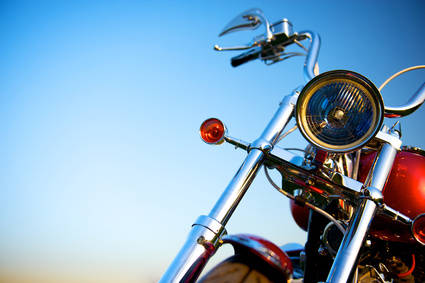Things You'll Need
- Oil Filter
- Oil
- Drain Plug Washer
- Open end wrench (or socket and ratchet)
- Drain pan
- Tool to remove the filter (an old leather belt will do)
- Rags for cleanup
- Funnel
- Aluminum foil
- Torque wrench (recommended)
- Owner's or service manual
STEP 1: Set up your spot. This is one of the most important steps. You don't want to be running around looking for tools, containers and rags while oil is flowing out of your bike and your hands are too slick to turn a doorknob!
STEP 2: Put your bike on the side stand, center-stand or rear-stand if you have one. Put your drain pan approximately under the bolt. Try to think ahead of where the oil's going to shoot out, and watch it as it drains. You'll most likely have to adjust the placement of the drain pan as the old oil slows down. Use the proper tool to remove the bolt. You don't want to strip it! If it drops in the pan, just pick it up quickly and don't burn yourself if it's hot!
STEP 4: Install a fresh drain plug crush washer. It may cost as much as a dollar, but is cheap insurance. Be sure to remove the old crush washer. The New Washer will help save the threads in your oil pan as it will take less torque to wrench down on the oil drain plug.If the drain plug washer is a copper washer it must be annealed to make it soft by heating to cherry red and cooling in water. All copper washers must be annealed before reinstalling or it will not compress. This includes new ones as copper hardens with age.
STEP 5: Put the drain bolt back in. Make sure it's clean of dirt and grime before putting it back. Remember that it's usually going into cast aluminum, so don't over-tighten it! Consult your manual or your local shop for torque specs for your bike. Remember when using a torque wrench that Nm is not equal to Ft-Lbs. If you don't torque in the bolt to spec, just install it snug but do not over-tighten it!
STEP 6: Prep the filter by filling it about a quarter full of fresh oil. "Swish" it around slowly to try and get all the filter material down in there wet with oil. Then, and this is very important, prep the rubber seal with a dab of oil on your finger. Just get the whole seal "wet". This will ensure that it makes good contact with the engine, and make it much easier to get it off during the next oil change.
STEP 7: Clear the filter area on the engine of grime and wipe a finger of fresh oil around the area just to get good clean contact. Carefully screw on the new filter. Don't force it! It should go quite easily. Once it takes more than about zero effort to turn it, it only needs about 3/4 of a turn left. You really don't want to over-tighten an oil filter. And you shouldn't need more than a clean hand to tighten it. Don't use a tool, unless it is attached to a torque wrench and you are tightening it to factory specs!
STEP 8: If you haven't already, move the dirty oil away from the area so you don't spill it! Look in your manual for oil capacity and use the funnel to add about half a quart under full capacity into the fill hole. Stop and check the level. Add or drain oil as necessary to be at about the bottom third between Add and Full. You don't want to overfill the oil! It adds undue pressure on the seals in your engine and can lessen its life. Remember that on motorcycles you have to have it straight up and down, not on the side stand, to check the level.
STEP 9: Clean it up, double check you've returned all the caps and bolts, and you're good to go! Most auto places that sell you the oil will take it back if you pour it back into the original containers. It's a messy job, but don't pour it on the ground. It doesn't go away, it's really bad for the environment, and quite likely it is illegal.
Lastly, make double sure to check the level again as well as the filter, drain bolt, and fill cap tightness after your first ride!





